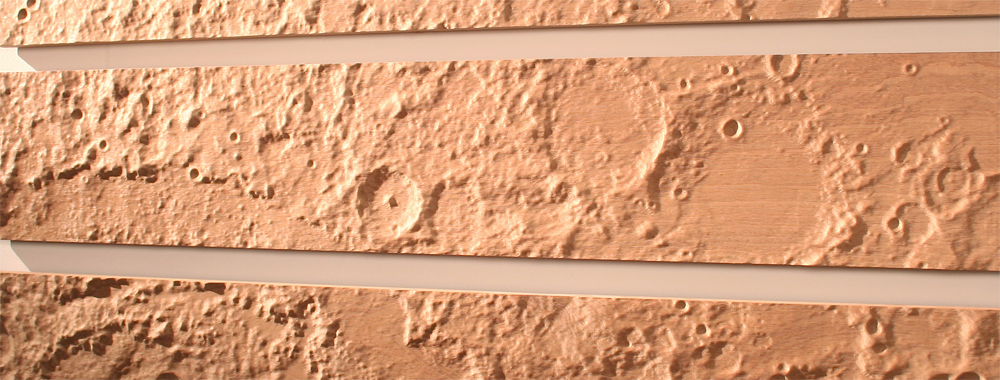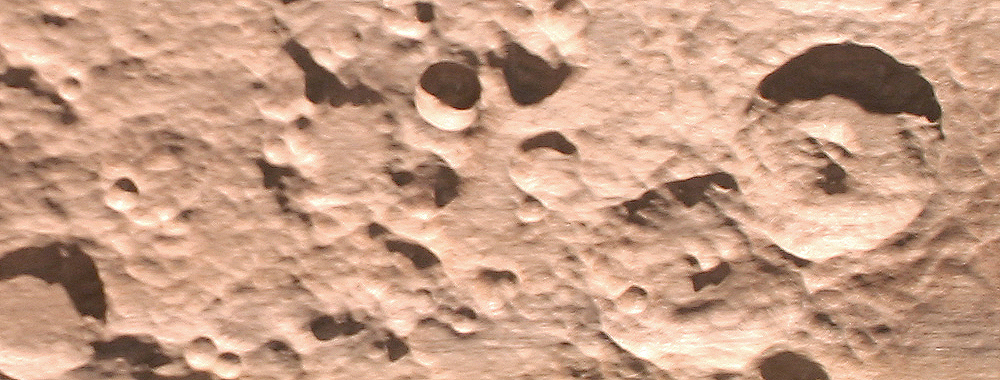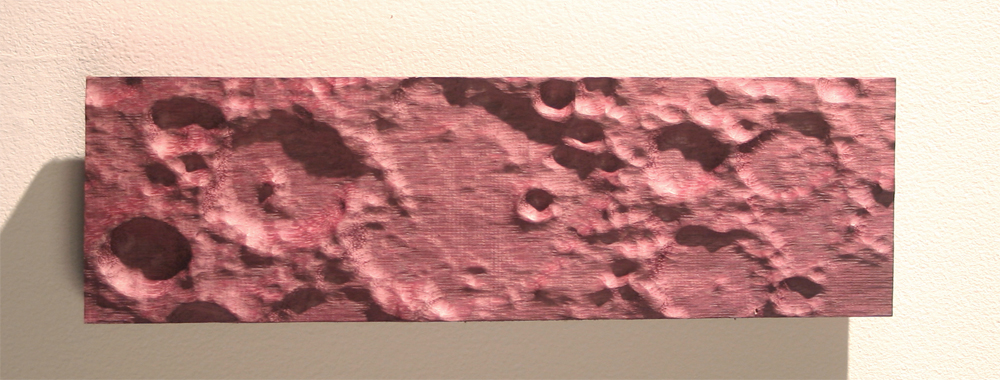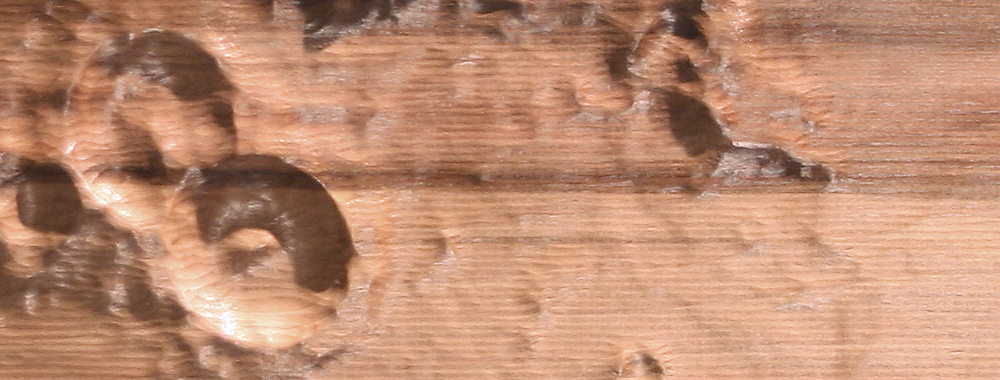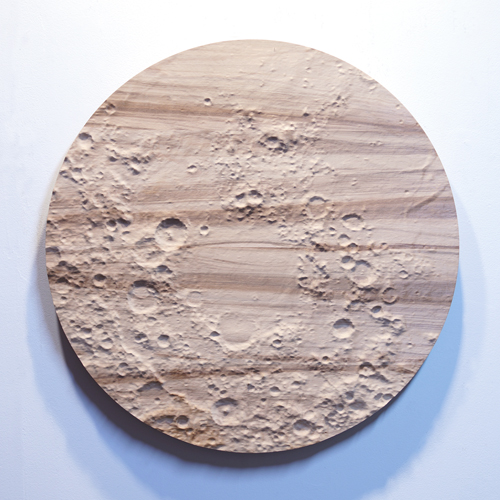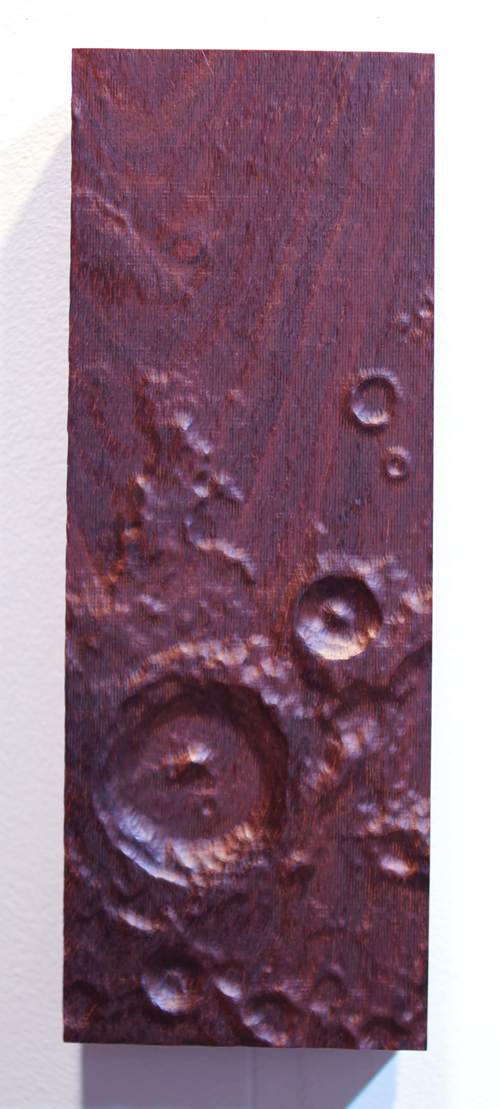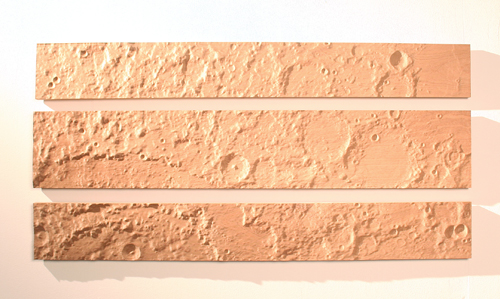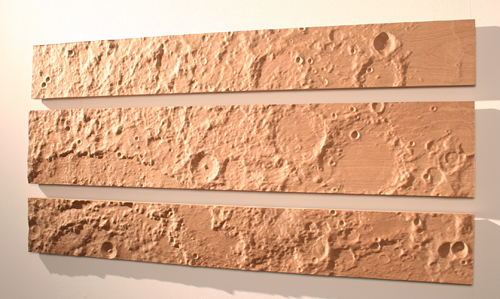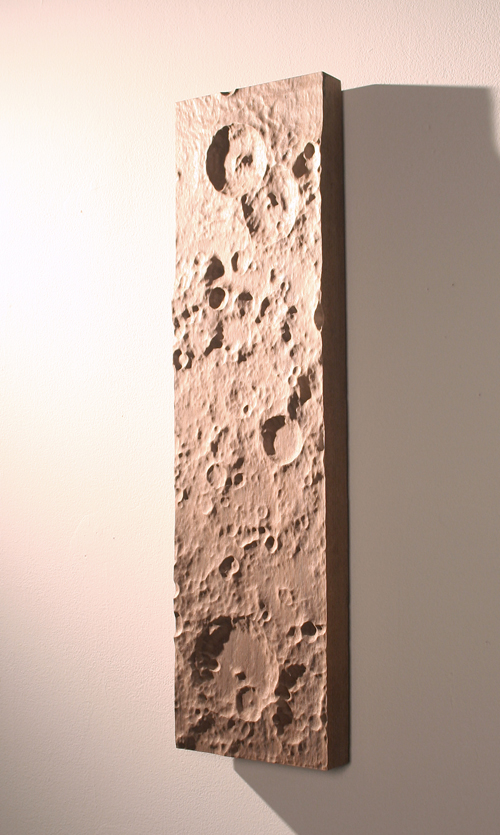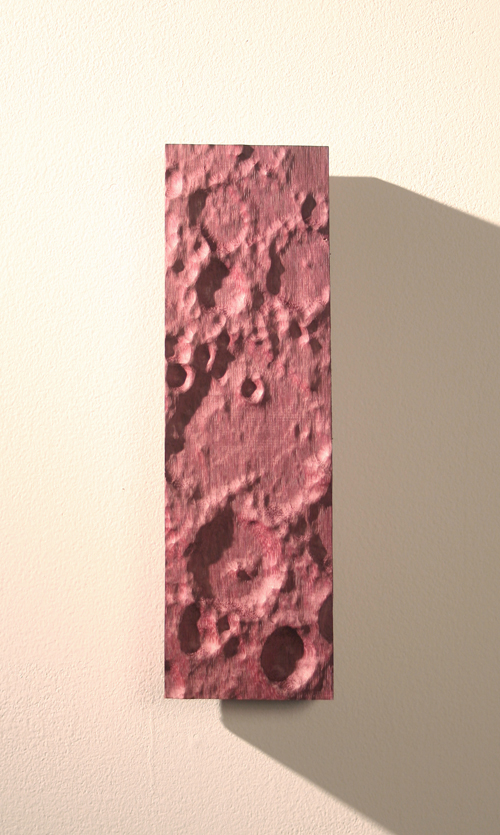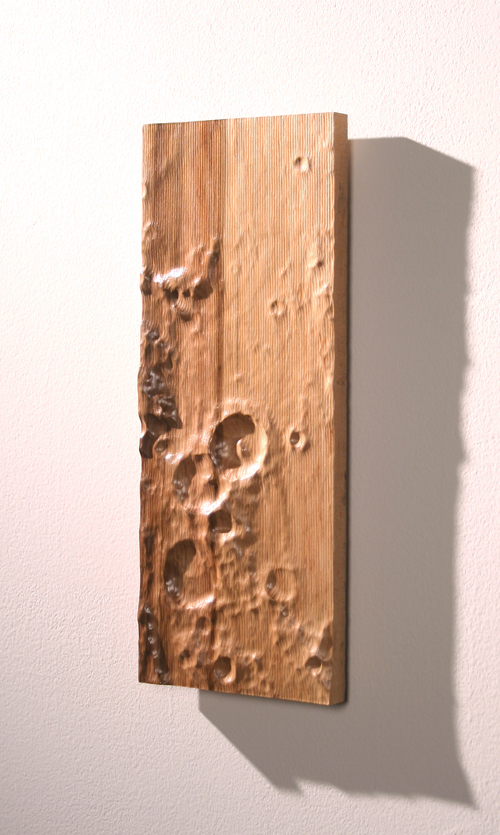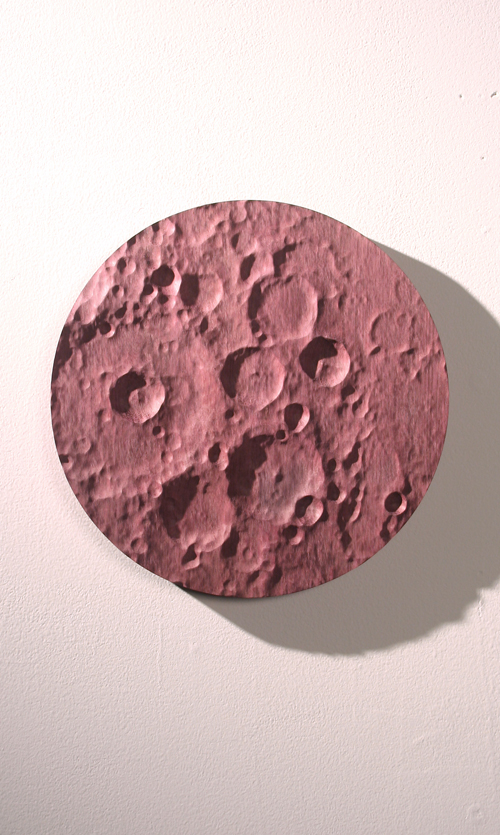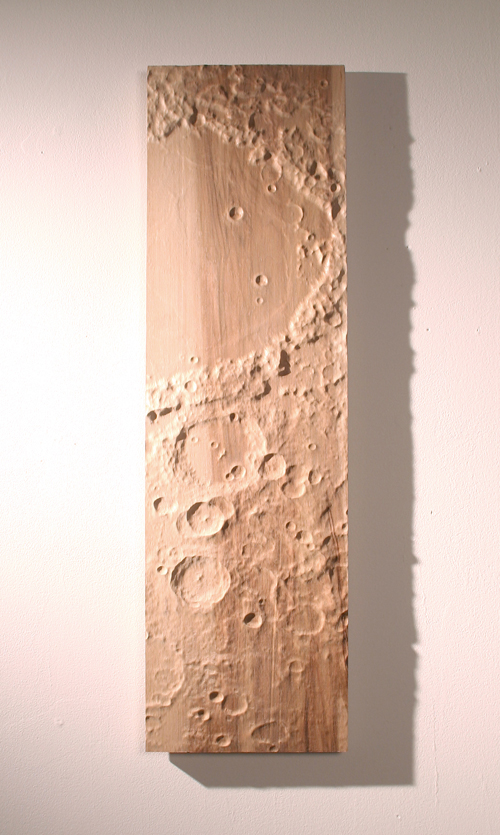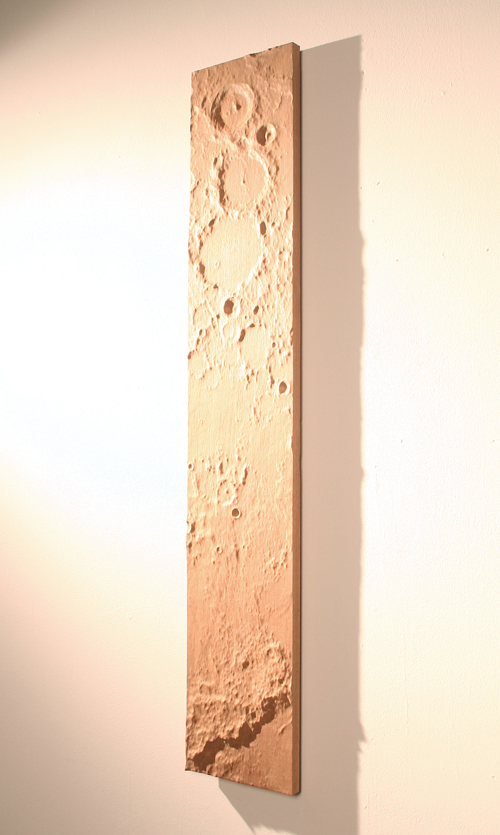|
Lunar Topographies Overview These carvings represent segments of the moon's surface as found in the topograhical data from NASA's LRO and JAXA's KAGUYA missions. Painstaking attention is paid to the relationship of crater groups in the composition of each carving. Areas of special interest have a natural balance of crater to sea; rough to gentle in texture. "On the moon we will develop technologies to survive in the infinite frontier of space, because the moon presents the same challenges we will encounter throughout the universe: harmful radiation, electrified dust, and extreme temperatures. Just as a scout finds the safest way for expeditions on Earth, NASA will first send a robotic scout, called the Lunar Reconnaissance Orbiter (LRO), to gather crucial data on the lunar environment that will help astronauts prepare for long-duration lunar expeditions. LRO will spend at least a year in a low polar orbit approximately 50 kilometers (31 miles) above the lunar surface, while its seven instruments find safe landing sites, locate potential resources, characterize the radiation environment and test new technology." from NASA "The Japan Aerospace Exploration Agency (JAXA) launched "KAGUYA (SELENE)" by the H-IIA Launch Vehicle at 10:31:01 a.m. on September 14, 2007 (JST) from Tanegashima Space Center (TNSC). The major objectives of the "KAGUYA" mission are to obtain scientific data of the lunar origin and evolution and to develop the technology for the future lunar exploration. "KAGUYA" consists of a main orbiting satellite at about 100km altitude and two small satellites (Relay Satellite and VRAD Satellite) in polar orbit. The orbiters will carry instruments for scientific investigation of the Moon, on the Moon, and from the Moon." from JAXA |
|
CRAIGDORETY |
light objects || lunar topo || devices || bio || contact || links |
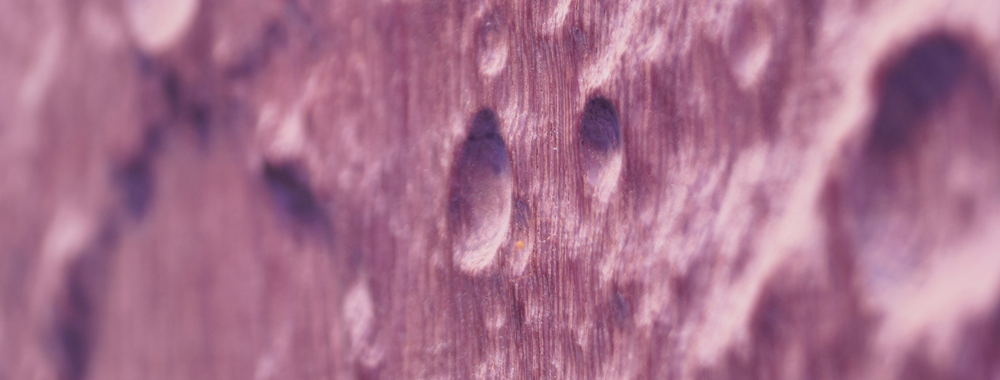 |
|
--click on name below-- Overview Untitled Near Side Mare Nectaris Arzachel Mare Orientale Unknown Topography Deslandres Crater Theopholis Crater Einstein-Bohr Crater Mare Crisium Ptolemaeus Crater |
|


